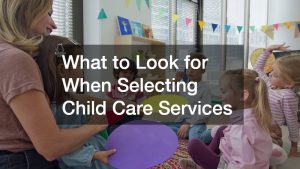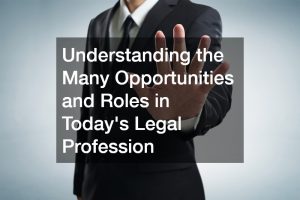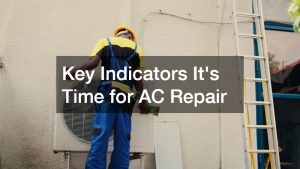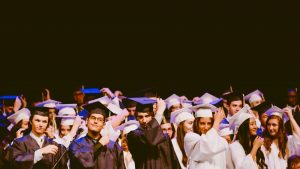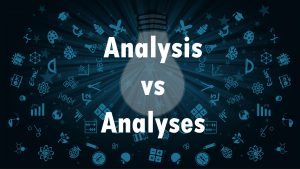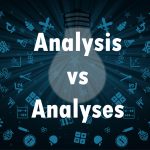In our last set of articles, we discussed the different levels of formal education and the different types of education. When we talk about informal education, however, we can’t really talk about it in the same method because it doesn’t have the structure formal education has. Because unlike formal education that has clear-cut levels and standards, informal education is not as easy to see from an educational standpoint.
Formal vs. Informal
Before we can discuss what informal education is, we need to briefly explain what formal education is. It’s basically the standard classroom setting provided by people specifically trained to teach a certain subject. And unlike informal education, formal education is divided into stages depending on how much information a student is likely to understand.
Formal education starts from the age of six (it can differ in other countries) and begins with basic skills like learning how to read and write, and it can go all the way to post-secondary education and post-graduate studies.
Informal education, on the other hand, does not have the structure and levels that formal schools have. It’s more natural and spontaneous, meaning the information you learn through this form of education comes from learning from experience. This range from visiting places like museums, libraries, and other educational facilities that aren’t traditional schools, or simply by looking at scenarios that allow a person to learn important information.
For example, formal education can teach you about fire and physics and, in more advanced classes, thermodynamics. But informal education is when you see a person burning their hand when they touch a pot handle without a potholder and you learn that the heat from the stove transferred to the pot handle, so you should be careful when you handle your cooking ware.
That’s not to confuse formal and informal with a third type of education: non-formal. Non-formal learning doesn’t always have the structure of formal education but isn’t as spontaneous as informal education. Examples include after-school organizations, non-credit education courses, seminars, and conferences.
Characteristics of Informal Education
Unlike formal education where learning is timed and scheduled, informal learning is much more spontaneous. It is possible for people of all backgrounds to undergo informal education even before they enter preschool as long as they are currently learning from everything around them.
Informal learning has no guidelines, curriculums, or standards. While lessons like teaching your child how to brush your teeth have some acceptable standards, there’s no right or wrong way to go about teaching your child which part of your teeth to brush first. And because there is no curriculum or standardized tests, it is difficult to quantify or put into test how well a learner understands – it’s either they understand or they don’t.
Because informal learning isn’t mandatory, people who learn have to want to learn how to do so. If you teach a child how to tie a shoelace, if they aren’t interested to learn how to do it on their own, it can be difficult to get them to remember how to do it.
Informal learning can come from a licensed teacher if they teach you something outside of the curriculum, but under informal education, anyone can be a teacher regardless of credentials or whether or not they have a teaching license. In fact, it’s most likely that your first informal teachers are your parents and the people you lived with growing up.
And unlike formal education which stops at a certain age or until you graduate or decide to leave an educational institution, it is possible for you to continue learning informally. Even fully-grown middle-aged adults can continue to benefit from informal learning as long as they are willing to learn for their own benefit. For example, an older person learning how to use a touchscreen phone from a younger person is a type of informal learning setting. Or a person who asks for directions is another type of informal education.
Does Informal Education Have the Same Bearing as Formal Education?
Unfortunately, it does not. Going through formal education to become a doctor (pre-med bachelor’s degree, medical school, residency, licensure) takes years and is not the same as watching a few seasons of The Good Doctor and Grey’s Anatomy or spending a day talking to a doctor. While you do get to pick up a few cool facts about medicine and how the industry operates, you will not be allowed to practice medicine because you do not have a license – you can even be arrested for impersonating a doctor.
That’s not to say, however, that informal education is completely useless. While informal education does not qualify as experience or education in most places of employment, it can count in some situations.
For example, if a child grows up watching their parent who works as an auto mechanic and grows up helping their parent, reading books, and watching shows and videos about car maintenance, they can be qualified to work in an auto mechanic shop themselves if the owner sees they are experienced enough.
Also, some important lessons and skills in life are actually taught outside the classroom. For example, it’s much more practical to teach a child how to tie their shoelaces within five minutes rather than a structured classroom setting.
Informal learning can be very helpful to those always open and willing to learn. While it may not be considered valid learning by some, there are some things you can learn better in the real world rather than studying it within the four walls of a classroom. That’s not to invalidate formal learning entirely, but it shows how both formal and informal learning go hand in hand to create an educated person who learns both inside the classroom and whatever scenario they’re in. Plato’s philosophy on education was that it was a lifelong process that happened regardless of the location but instead came from a persons’ curiosity and desire to learn.

